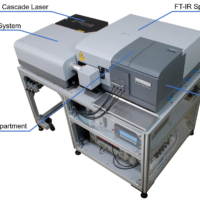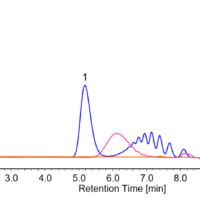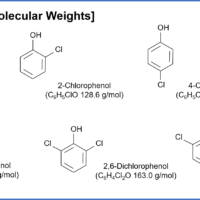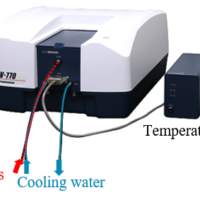Introduction
JASCO IRT-7100 microscopic system enables high speed imaging measurement even though single-element detector.
Table 1 shows the time required for measurement of 200 x 200 µm area by multi-channel detector (16 x 1 linear array detector) and single-element detector (IRT-7100), and Figure 1 shows the image of measurement protocol by each detector. Generally multi-channel detector is used for high speed imaging measurement, and its measurement area size is determined by the magnification of Cassegrain mirror. On the other hand, the measurement area size by single-element detector is determined by the aperture size.
Accordingly, single-element detector is considered to have an advantage because the aperture size is changeable, so that for large area measurement with large aperture size, the measurement time may be shorter than multi-channel detector. Therefore, for the measurement of 200 x 200 µm area, the measurement time by single-element detector with 50 x 50 mm aperture size can be shorter than linear array detector with x 32 Cassegrain, even the measurement points are reduced.
One of the significant points to measure large area in high speed is the requirement for unstable sample such as food or tissue which may denature in a short time. In this experiment, we would like to show visually the difference of water content distribution in 2 types of noodles cooked by professional and amateur. By using IRT-7100, high speed imaging measurement was done for the samples in a few millimeter block before drying.
Table 1 Comparison of detectors and aperture size in 200 x 200 µm area measurement *1
| Detector | Linear array (16 x 1) | Single-element (IRT-7100) | Single-element (IRT-7100) |
| Aperture size | 6.25 x 6.25 µm | 25 x 25 µm | 50 x 50 µm |
| Measurement points | 32 x 32 | 8 x 8 | 4 x 4 |
| Measurement time2 | Approx. 7 sec. | Approx. 7 sec. | Approx. 2 sec. |
*1 Measurement condition: x 32 Cassegrain, resolution: 16 cm-1, accumulation: 1
*2 Measurement time depends on measurement points
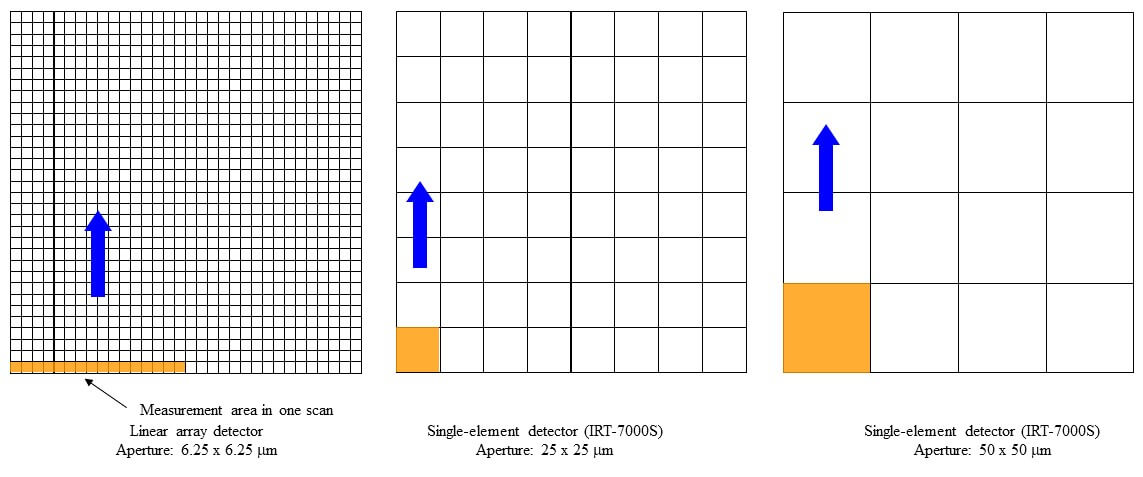
Figure 1 Comparison of measurement area in 200 x 200 µm area
In order to compare water content in noodle cross-section, the sample was prepared quickly and measured with high speed. The noodles cooked by professional and amateur were cut in a few millimeters thickness and sandwiched by CaF2 windows in order to avoid drying (Figure 2).
Experimental
<Measurement condition>
Instrument: IRT-7100
Measurement points: 38 x 54 points (2052 points) (professional)
Measurement method: transmittance
Measurement size: 3.7 mm x 5.3 mm (professional), 4.3 mm x 4.6 mm (amateur)
Aperture: 100 x 100 µm
Detector: MCT
Measurement time: approx. 5 minutes (professional)
Resolution: 16 cm-1
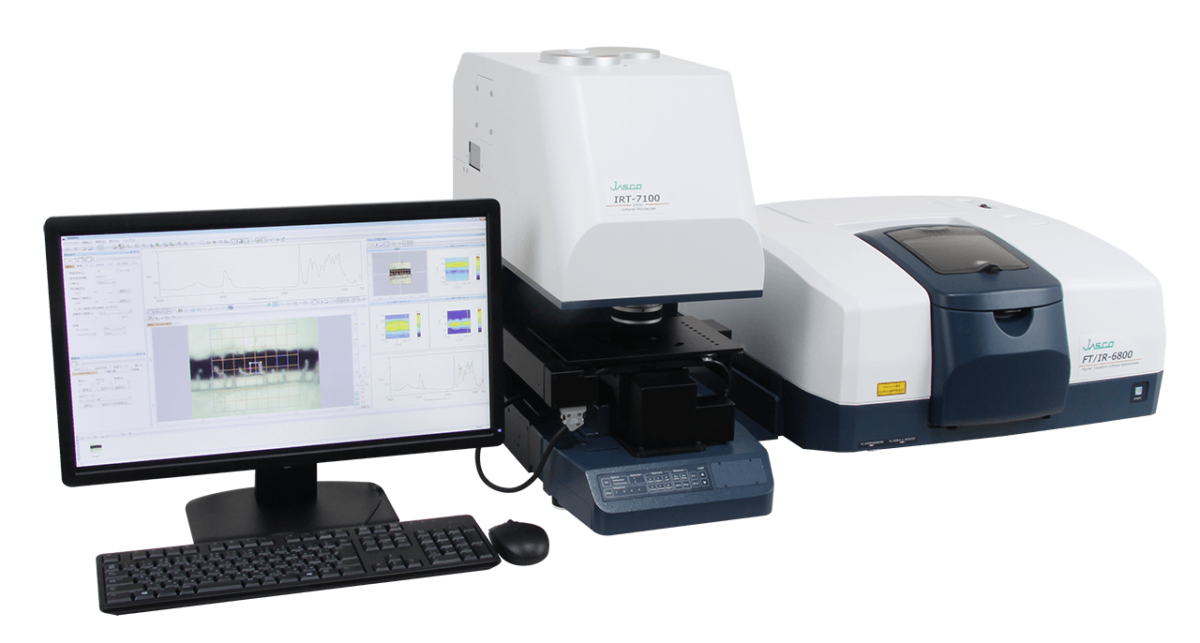

Figure 2. Process of measurement
Results
The water content distribution in both noodle cooked by professional and amateur was compared by calculating the peak area ratio of starch (3872 – 4165 cm-1) and water (1882 – 2321 cm-1) (Figure 3).
Figure 3 shows that water content in the noodle cooked by amateur was rich in the center, while water content in the noodle cooked by professional was distributed in the layer between outer side and core part. In addition, as a results of sensory test, almost all testers of 20 people said that the noodle cooked by professional was more delicious. In this experiment, By high speed mapping of few millimeters sample with 100 µm2 measurement spot size, it was confirmed that the taste was related to the water content distribution.
By using single-element detector system with changeable aperture size when combined with high speed mapping, it enables to measure the samples with area as large as few milimeters in a shot time and visualize the sample in molecular level (such as water content distribution in food and medicine).
Using such system will be very useful for the study of food/medicine, if the relationship between the obtained image and food taste or effectiveness of medicine could be determined.
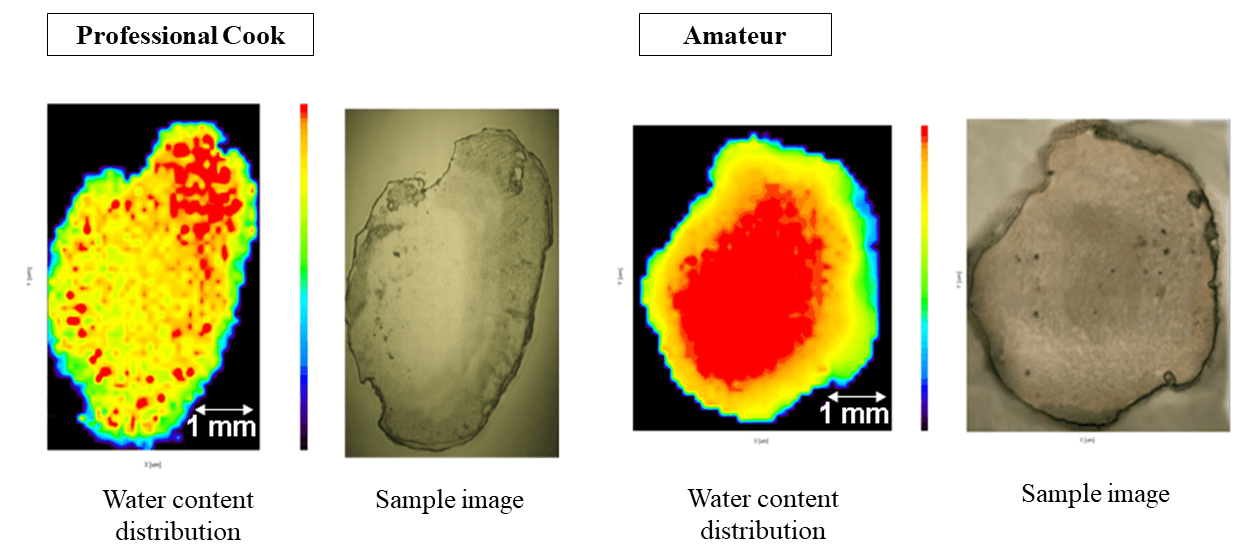
Figure 3. Water content distribution of fried noodle cooked by professional and amateur

